Abstract
To determine whether endogenous alpha-adrenergic activity contributes to abnormal insulin secretion in nonketotic, hyperglycemic, diabetic patients, alpha-adrenergic blockade was produced in normal and diabetic subjects. The diabetics had a significantly (P less than 0.01) greater increase in circulating insulin 1 h after an intravenous phentolamine infusion than did the normal subjects. During the phentolamine infusion, there was also a significant augmentation of acute insulin responses to intravenous glucose (20 g) pulses in normal subjects (P less than 0.05) and diabetics (P less than 0.02); this augmentation was fivefold greater in the diabetics. Simultaneous treatment with the beta-adrenergic blocking agent, propranolol, did not alter these findings. Thus a role for exaggerated endogenous alpha-adrenergic activity in abnormal insulin secretion of the diabetic subjects is suggested. To determine whether this alpha-adrenergic activity might be related to elevated circulating catecholamines, total plasma-catecholamine levels were compared in normal and nonketotic diabetic subjects given intravenous glucose pulses. These levels were significantly greater (P less than 0.02) in the diabetic compared to the normal group before the glucose pulse, and increased significantly in both groups (P less than 0.02 and less than 0.001, respectively) after the pulse. These data suggest that excessive catecholamine secretion may lead to an abnormal degree of endogenous alpha-adrenergic activity, which contributes to defective insulin secretion in diabetic subjects.
Full text
PDF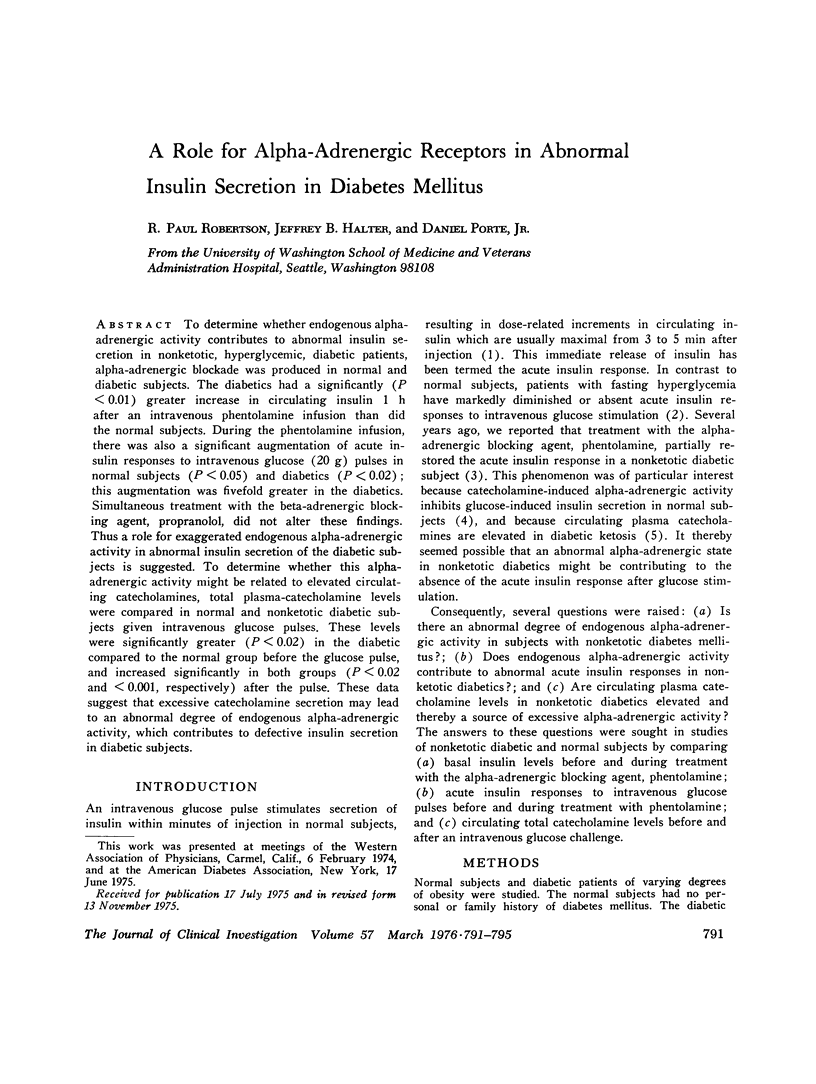
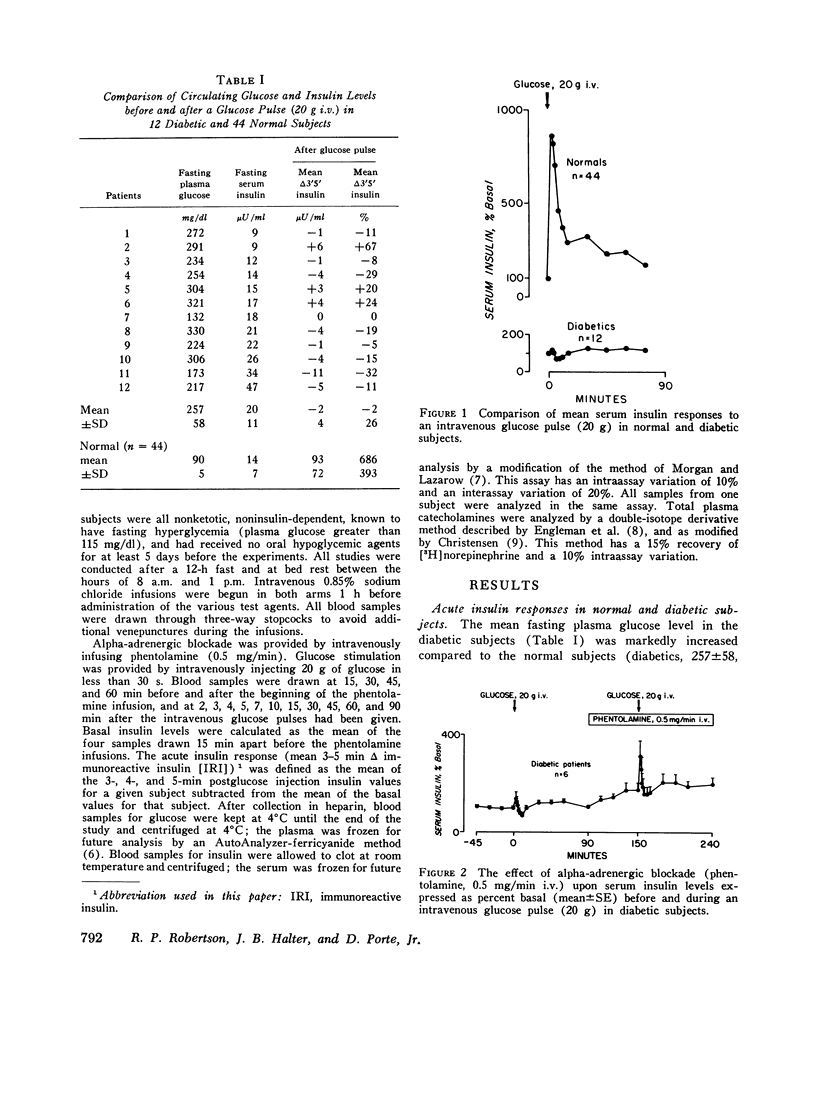
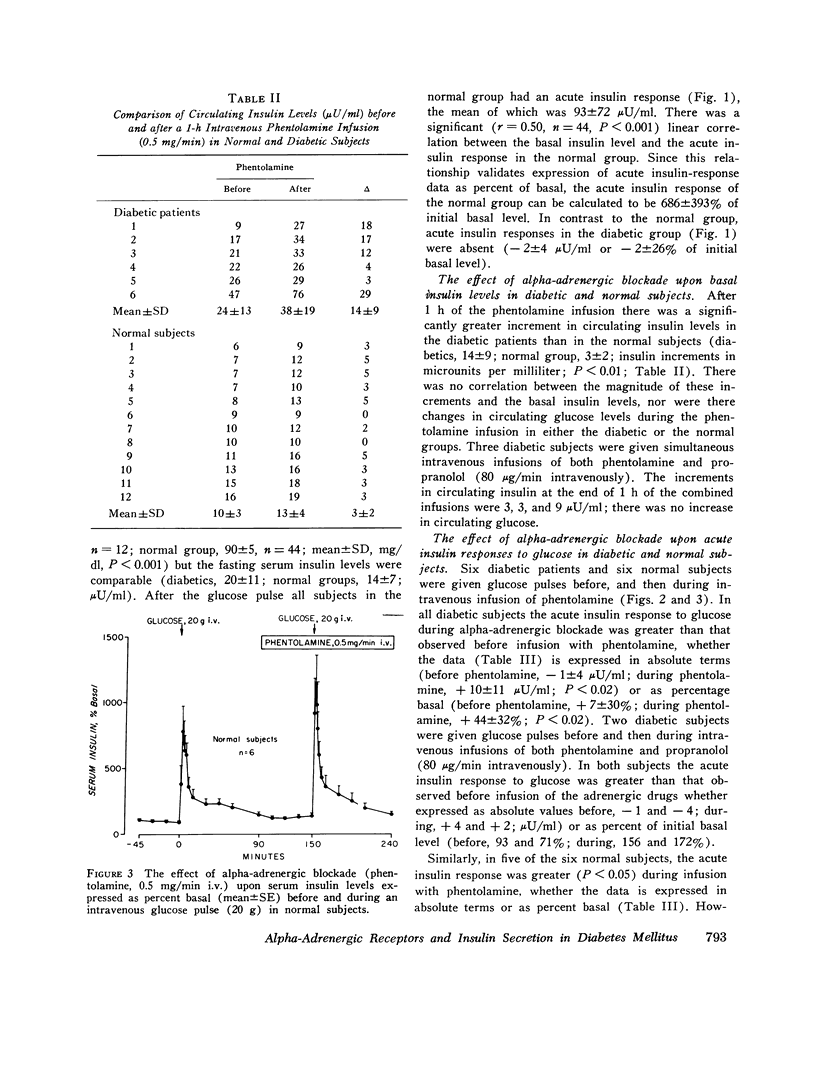
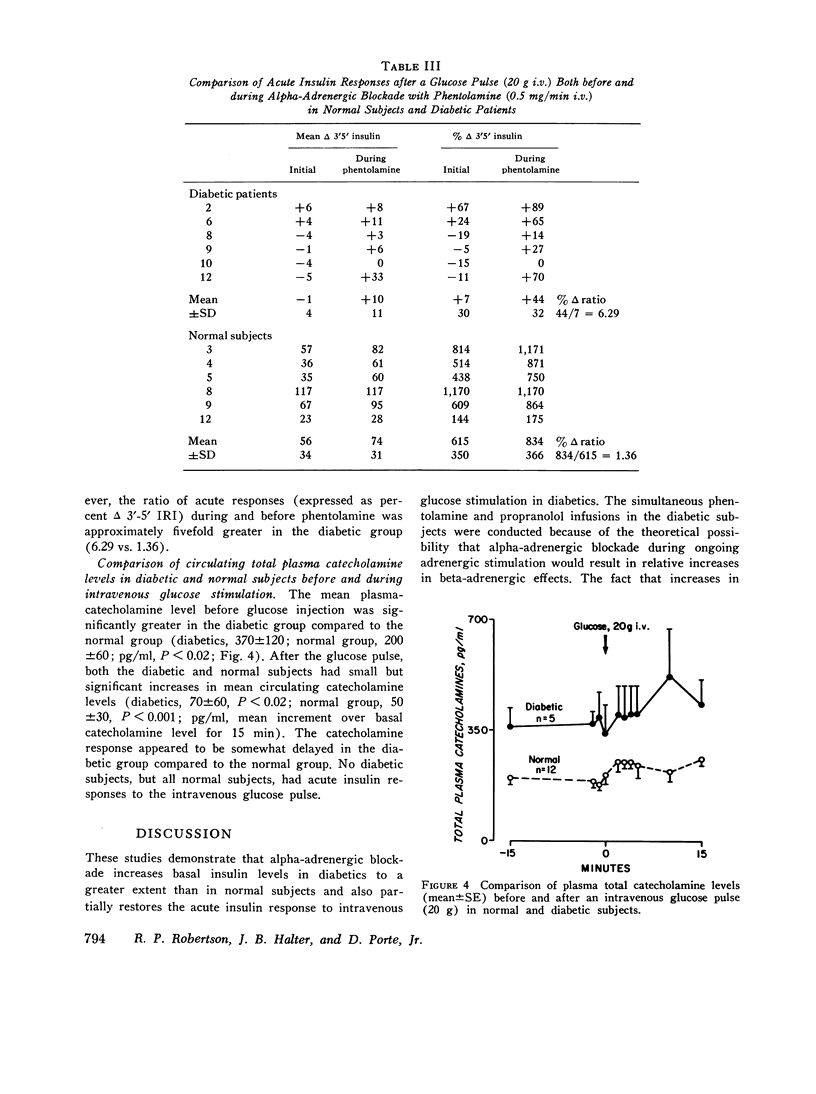
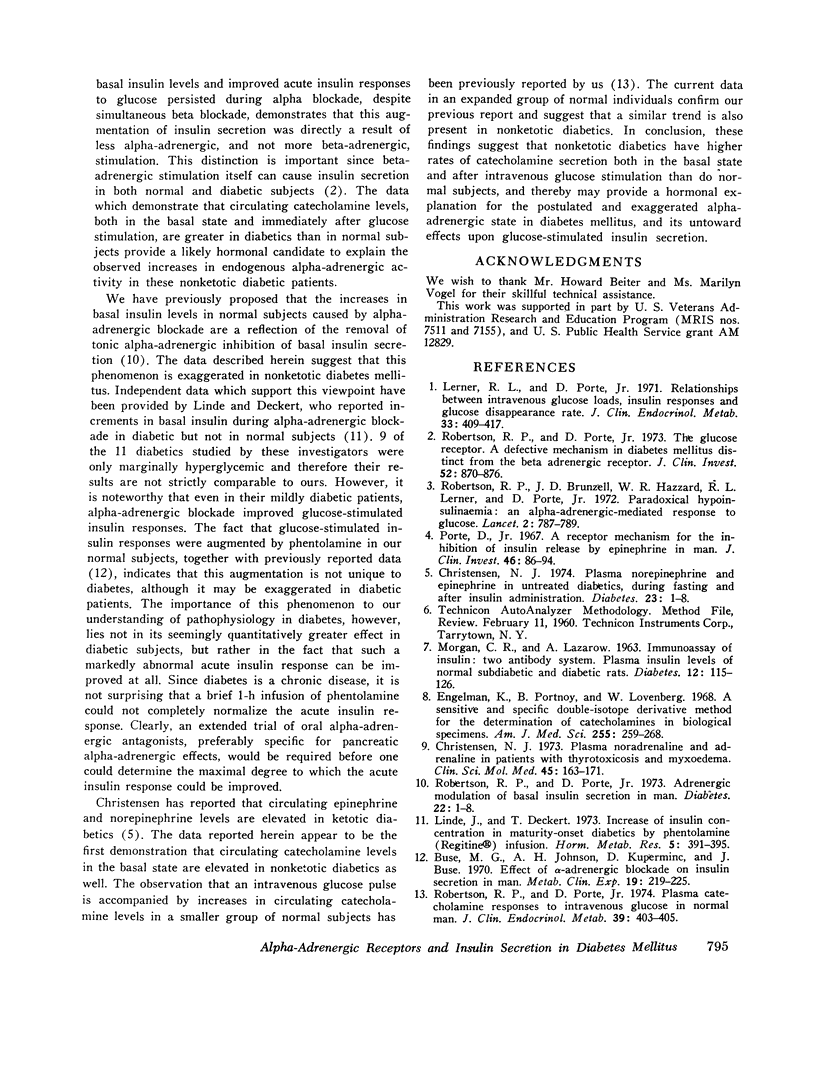
Selected References
These references are in PubMed. This may not be the complete list of references from this article.
- Buse M. G., Johnson A. H., Kuperminc D., Buse J. Effect of alpha-adrenergic blockade on insulin secretion in man. Metabolism. 1970 Mar;19(3):219–225. doi: 10.1016/0026-0495(70)90055-7. [DOI] [PubMed] [Google Scholar]
- Christensen N. J. Plasma noradrenaline and adrenaline in patients with thyrotoxicosis and myxoedema. Clin Sci Mol Med. 1973 Aug;45(2):163–171. doi: 10.1042/cs0450163. [DOI] [PubMed] [Google Scholar]
- Christensen N. J. Plasma norepinephrine and epinephrine in untreated diabetics, during fasting and after insulin administration. Diabetes. 1974 Jan;23(1):1–8. doi: 10.2337/diab.23.1.1. [DOI] [PubMed] [Google Scholar]
- Engelman K., Portnoy B., Lovenberg W. A sensitive and specific double-isotope derivative method for the determination of catecholamines in biological specimens. Am J Med Sci. 1968 Apr;255:259–268. doi: 10.1097/00000441-196804000-00007. [DOI] [PubMed] [Google Scholar]
- Lerner R. L., Porte D., Jr Relationship between intravenous glucose loads, insulin responses and glucose disappearance rate. J Clin Endocrinol Metab. 1971 Sep;33(3):409–417. doi: 10.1210/jcem-33-3-409. [DOI] [PubMed] [Google Scholar]
- Linde J., Deckert T. Increase of insulin concentration in maturity-onset diabetics by phentolamine (Regitine) infusion. Horm Metab Res. 1973 Nov;5(6):391–395. doi: 10.1055/s-0028-1093910. [DOI] [PubMed] [Google Scholar]
- Porte D., Jr A receptor mechanism for the inhibition of insulin release by epinephrine in man. J Clin Invest. 1967 Jan;46(1):86–94. doi: 10.1172/JCI105514. [DOI] [PMC free article] [PubMed] [Google Scholar]
- Robertson R. P., Brunzell J. D., Hazzard W. R., Lerner R. L., Porte D., Jr Paradoxical hypoinsulinaemia: an alpha-adrenergic-mediated response to glucose. Lancet. 1972 Oct 14;2(7781):787–789. doi: 10.1016/s0140-6736(72)92146-0. [DOI] [PubMed] [Google Scholar]
- Robertson R. P., Porte D., Jr Adrenergic modulation of basal insulin secretion in man. Diabetes. 1973 Jan;22(1):1–8. doi: 10.2337/diab.22.1.1. [DOI] [PubMed] [Google Scholar]
- Robertson R. P., Porte D., Jr Plasma catecholamine responses to intravenous glucose in normal man. J Clin Endocrinol Metab. 1974 Aug;39(2):403–405. doi: 10.1210/jcem-39-2-403. [DOI] [PubMed] [Google Scholar]
- Robertson R. P., Porte D., Jr The glucose receptor. A defective mechanism in diabetes mellitus distinct from the beta adrenergic receptor. J Clin Invest. 1973 Apr;52(4):870–876. doi: 10.1172/JCI107251. [DOI] [PMC free article] [PubMed] [Google Scholar]


